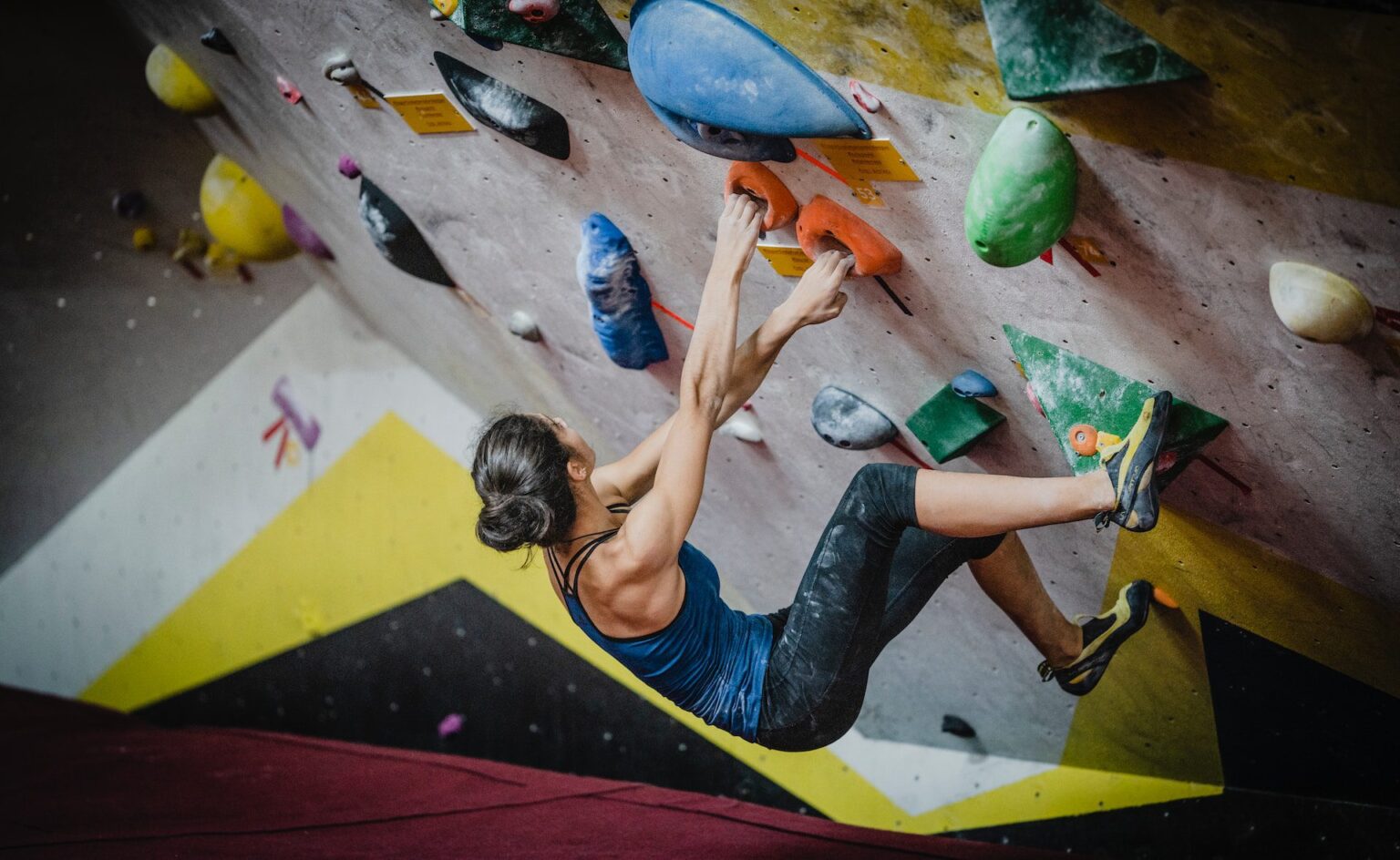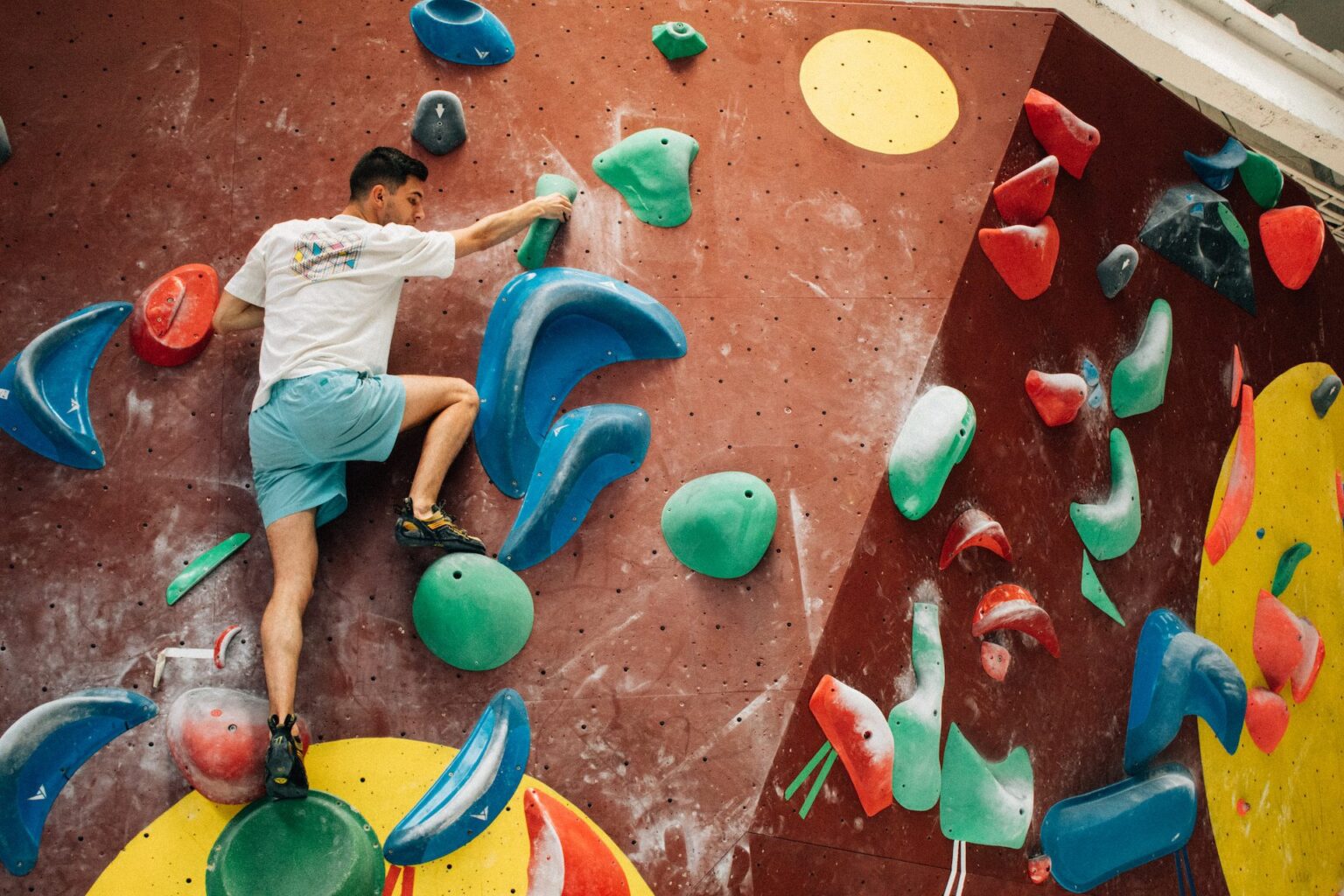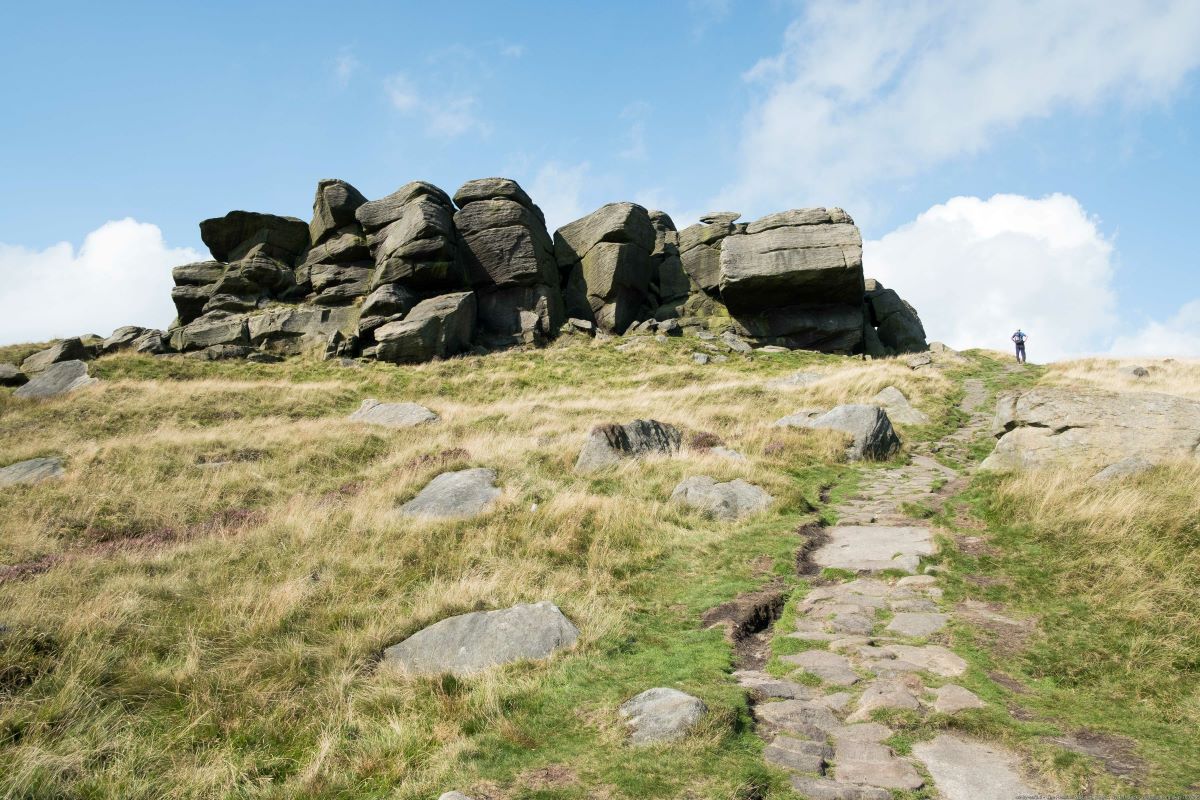Bouldering is an exhilarating sport, both physically and mentally rewarding. Whether you’re a beginner looking to tackle your first bouldering wall or an experienced climber seeking to refine your skills, this guide has something for everyone. We’ve compiled a series of bouldering tips to help you navigate your journey, from beginner-friendly advice to advanced techniques for those ready for a challenge. Our aim? To equip every boulderer with the knowledge to scale new heights safely and confidently. So strap on your climbing shoes and explore the exciting bouldering world together. Ready to climb higher?
#1 Tip: Learning the Basics
Diving into the world of bouldering requires a solid grasp of climbing techniques. Regardless of how challenging the route might be, the fundamentals of bouldering always come into play. You need to understand deliberate movement and maintain correct positions. This includes knowing how to distribute your body weight effectively, understanding the concept of center of gravity, and mastering precise foot placements. Remember, bouldering is more about brain and technique rather than brawn. So before you hit those difficult climbs, practice these basics over and over until they become second nature or muscle memory. That’s your ticket to a successful climbing career.
#2 Tip: Start with Indoor Climbing
If you’re new to the bouldering scene, an indoor climbing gym is an excellent place to start. Compared to outdoor climbing, indoor bouldering offers controlled conditions, making it less intimidating for beginner climbers. Gyms are equipped with different bouldering routes, varying in difficulty, allowing you to increase the challenge as your skills develop gradually. Moreover, indoor bouldering provides the opportunity to learn and practice the fundamentals of bouldering, such as grip strength, body position, and proper footwork. Remember, it’s not about rushing to the top but building a solid foundation. Once you’ve developed your skills and confidence, you’ll be ready to tackle the great outdoors. So grab those shoes and start climbing in an indoor gym’s safe, supportive environment.
#3 Tip: Choosing the Right Gear
Embarking on your climbing journey requires your enthusiasm and the right gear. For instance, a quality pair of climbing shoes can significantly enhance your performance, offering more friction and precision on the bouldering wall. While more pertinent to outdoor climbing, a crash pad provides a safe landing zone, minimizing potential injuries.
But here’s the good news for our budget-conscious beginner climbers: you don’t have to break the bank outfitting yourself immediately. Most indoor climbing gyms rent out essential gear, providing an affordable way to get started. This also allows you to try out different styles and brands before investing. Consider buying your equipment as you grow and gain more experience in your bouldering journey. Remember, it’s not about having the most expensive gear, but gear that suits you best and ensures safety while climbing. So start with what you can, and let the climb guide your gear needs!
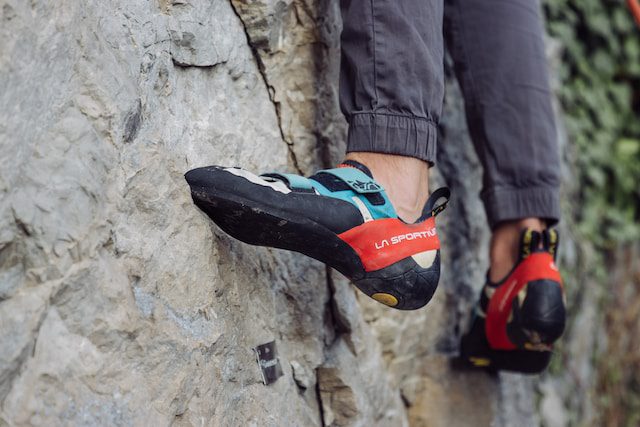
#4 Tip: Climbing Grades and Routes
An intelligent approach to progressing in bouldering is understanding climbing grades and routes. Grading systems like the V-scale for bouldering grades provide insights into the difficulty level of a climb. They are vital indicators that help you gauge your current climbing ability and assist in planning your climbing journey. Awareness of your current grade lets you select appropriate bouldering routes, ensuring a steady and safe progression in your skills. Remember, there’s no need to rush and push yourself onto routes beyond your level. The key to improvement is mastering each grade before moving on to the next one. This way, you develop your bouldering skills effectively and reduce the risk of potential injuries. So, keep track of your climbing grades and choose your routes wisely. That’s how you evolve in this exhilarating sport.
#5 Tip: Body and Weight Management
Bouldering is more than just a physical challenge—it’s about managing body weight and effectively leveraging muscle strength. Your upper body and leg muscles are crucial, especially when supporting your entire body weight during a climb. However, strength alone isn’t the winning ticket. Maintaining a balanced center of gravity is critical to successful bouldering moves. Keep your weight close to the wall, focus on proper body positioning, and use your legs to propel you upwards rather than relying solely on your upper body. This body weight and strength management makes bouldering a full-body workout that demands strength and strategy.
#6 Tip: Joining a Climbing Community
Climbing, especially bouldering, is more than just a solo sport. It can be a great social experience. Joining a climbing community can provide immense benefits for beginner climbers. There’s much to learn from these communities’ collective knowledge and experience. Besides, climbing with others is not just about learning new techniques and routes; it also adds a layer of safety and support. Observing other climbers can expose you to different climbing styles, help you master new techniques, and provide a supportive environment to further your climbing skills. So, don’t hesitate—find your local climbing community and start connecting!
#7 Tip: Improving Finger Strength
Finger strength is a crucial aspect of bouldering, often determining the difference between holding onto a craggy outcrop and a frustrating fall. Finger strength training can significantly enhance your climbing ability and protect you from finger injuries. This involves effectively training your fingers to withstand the pressure to grip climbing holds. Here are a few methods to improve finger strength:
- Dead hangs: Hang from a pull-up bar, keeping your body still to help improve grip strength and forearm endurance.
- Climbing board workouts: These tools offer a range of holds to help you work on your grip.
- Finger curls: Holding a weight, curl your fingers towards your palm and slowly uncurl them to help strengthen your finger muscles.
Remember, consistency is vital in finger strength training. So make it a regular part of your climbing workout routine.
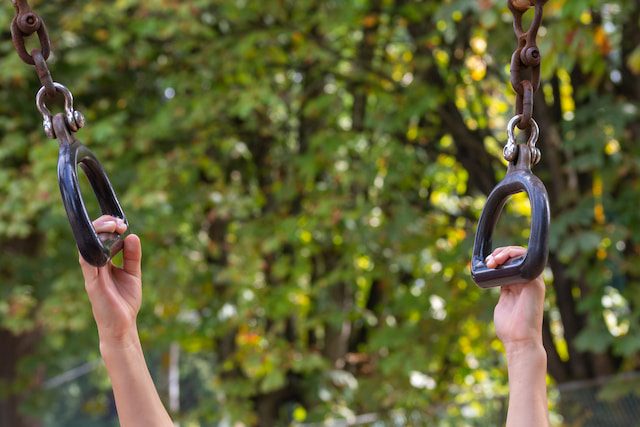
#8 Tip: Perfecting Footwork
Proper footwork can make a world of difference in bouldering. A strong focus on foot placement can help you move smoothly, efficiently, and ultimately, climb better. Here are some tips for perfecting your footwork:
- Watch Your Feet: Keep an eye on your feet. Watch them until they are firmly placed on the foothold.
- Quiet Feet: Place your foot on the hold as quietly as possible. This usually means you’ve made a precise placement.
- Use the Edges of Your Shoes: Your climbing shoes’ inside and outside edges are your secret weapon. Use them for better grip and balance.
- Practice: Practice different foot techniques like smearing, edging, and back-stepping on different types of holds.
- Review: After each climb, review your footwork and consider how to improve it next time.
Remember, great footwork is all about precision, not speed.
#9 Tip: Training for Harder Climbs
As you progress in your bouldering journey, you’ll naturally aim to conquer more challenging routes. Here’s how to prepare for these challenging climbs:
- Technique Over Power: Focus on perfecting your technique rather than just building muscle. Technical mastery can often help you overcome challenging routes that brute strength alone can’t tackle.
- Vary Your Climbing: Mix it up! Don’t just stick to one climbing style or one hold type. The more varied your climbing experience, the better equipped you’ll be for different challenges.
- Take Rests: Remember to underestimate the power of a rest day. Overworking can lead to injuries and hinder your progress. Listen to your body.
- 4Climb With Better Climbers: Climbing with people who are better than you can be a great learning opportunity. You’ll be surprised how much you can pick up just by observing and asking questions.
Everyone progresses at their own pace, so be encouraged if you find a difficult route. Keep at it, and you’ll get there!
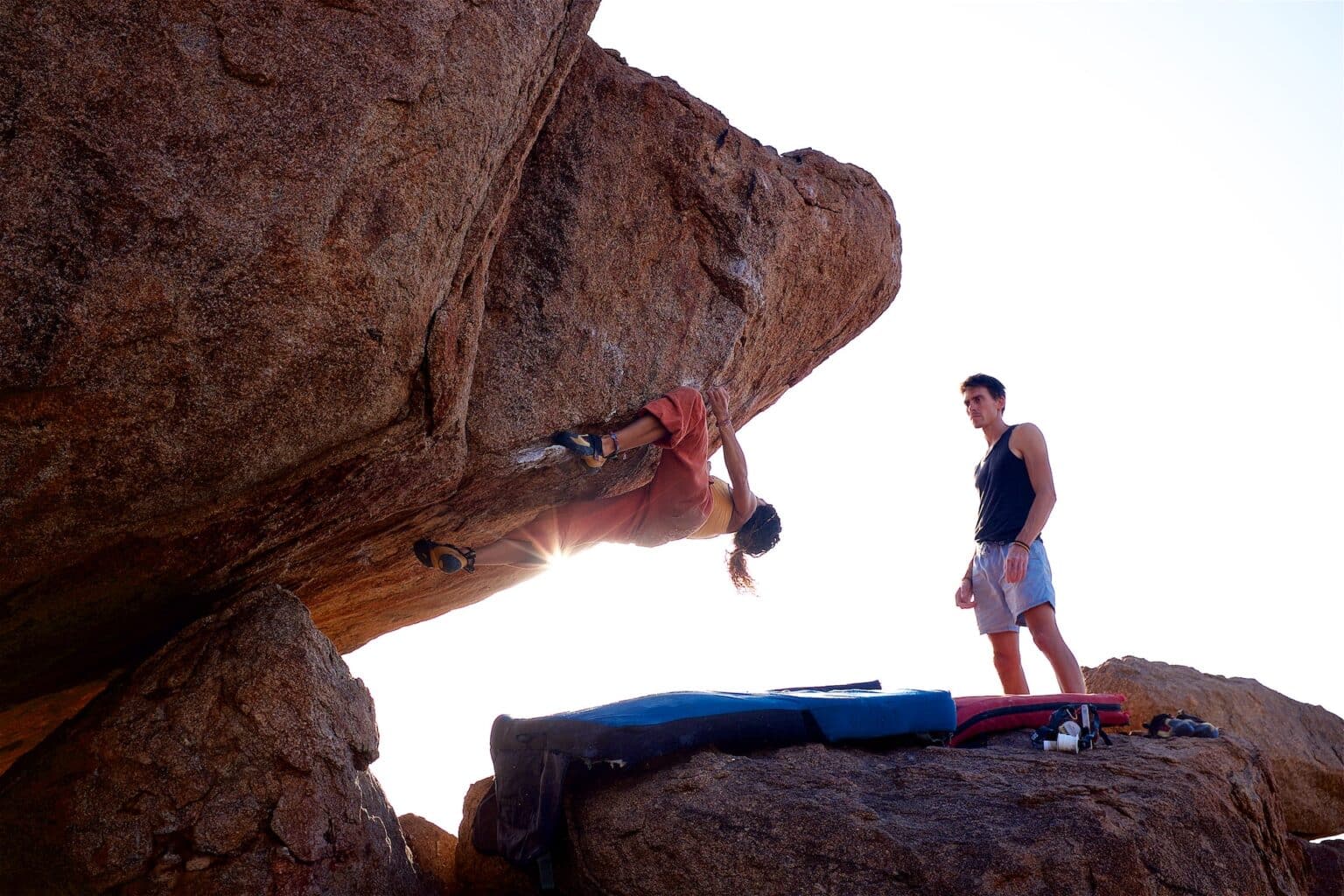
#10 Tip: Regular Climbing Sessions
Consistency is critical in any sport, and bouldering is no exception. Regular climbing sessions allow your body to build the muscle memory it needs to execute movements efficiently. Schedule consistent climbing days in your week and stick to them. You’ll notice your climbing ability improving steadily. Remember, each climbing session is a step forward in your climbing career, whether making small gains on a route or conquering a new grade. Also, regular climbing helps in building climbing strength, that’s essential for more advanced moves. So, keep up with your climbing sessions, and remember, every climb counts!
#11 Tip: Taking Up Bouldering Challenges
Progressing in your bouldering journey means gradually taking up new challenges. After honing your skills at the indoor bouldering gym, consider transitioning to outdoor climbing. The unpredictability of natural rock adds a new layer of excitement and complexity. Start with easier bouldering routes on natural rocks before moving on to more difficult ones. When you’re comfortable, try different bouldering moves and challenge yourself. The bouldering wall’s various climbing routes can provide an excellent training ground. Outdoor climbing also exposes you to other forms of climbing, adding depth to your experience. But remember, no matter the route’s difficulty or the type of rock you’re tackling, and safety always comes first. Enjoy the thrill of outdoor climbing, conquer new bouldering moves, and continue to broaden your climbing horizon.
#12 Tip: Specialized Techniques for Advanced Climbers
As you transition from a beginner to an advanced climber, it’s time to embrace specialized bouldering techniques. Advanced climbers possess skills that differentiate them from novices, allowing them to tackle more challenging routes and problem-solve on the wall. Bouldering skills such as dynamic moves (dynos), dead points, and static climbing become essential tools in your climbing toolbox.
Moreover, understanding complex bouldering techniques like heel and toe hooks, flagging, smearing, and palming will open up new possibilities on the bouldering wall. Observing other advanced climbers, asking for advice, and practicing these techniques are crucial. Remember, learning is a continuous journey, even for the most experienced boulderers. So, keep refining your bouldering techniques and skills, and you’ll find yourself solving complex problems on your climbing routes that you wouldn’t have thought possible before.
#13 Tip: Safe and Responsible Climbing
As you advance in your climbing journey, pay attention to safety and responsibility. Experienced climbers know that maintaining a safe distance from others, especially during rope climbing, is crucial to prevent accidents. Always be aware of your surroundings and mindful of others sharing the climbing space. In addition, understanding the potential risks in bouldering, such as falling or straining muscles, and taking preventative measures is critical. Lastly, be a responsible climber – respect the climbing gym rules, outdoor climbing areas, and fellow climbers. Remember, a great climber is a safe and responsible one.
Conclusion
In conclusion, these bouldering tips are designed to help you at every stage of your climbing journey. We’ve covered everything from choosing the right gear to understanding advanced techniques. Whether you’re a beginner just stepping into the climbing gym or an experienced climber looking to refine your skills, these tips offer something for everyone. Remember, bouldering is about physical strength, mental determination, and constant learning. Embrace the journey with an open mind and an eager spirit. Keep climbing, keep learning, and most importantly, enjoy the ride. After all, every climber was once a beginner. Happy bouldering!

